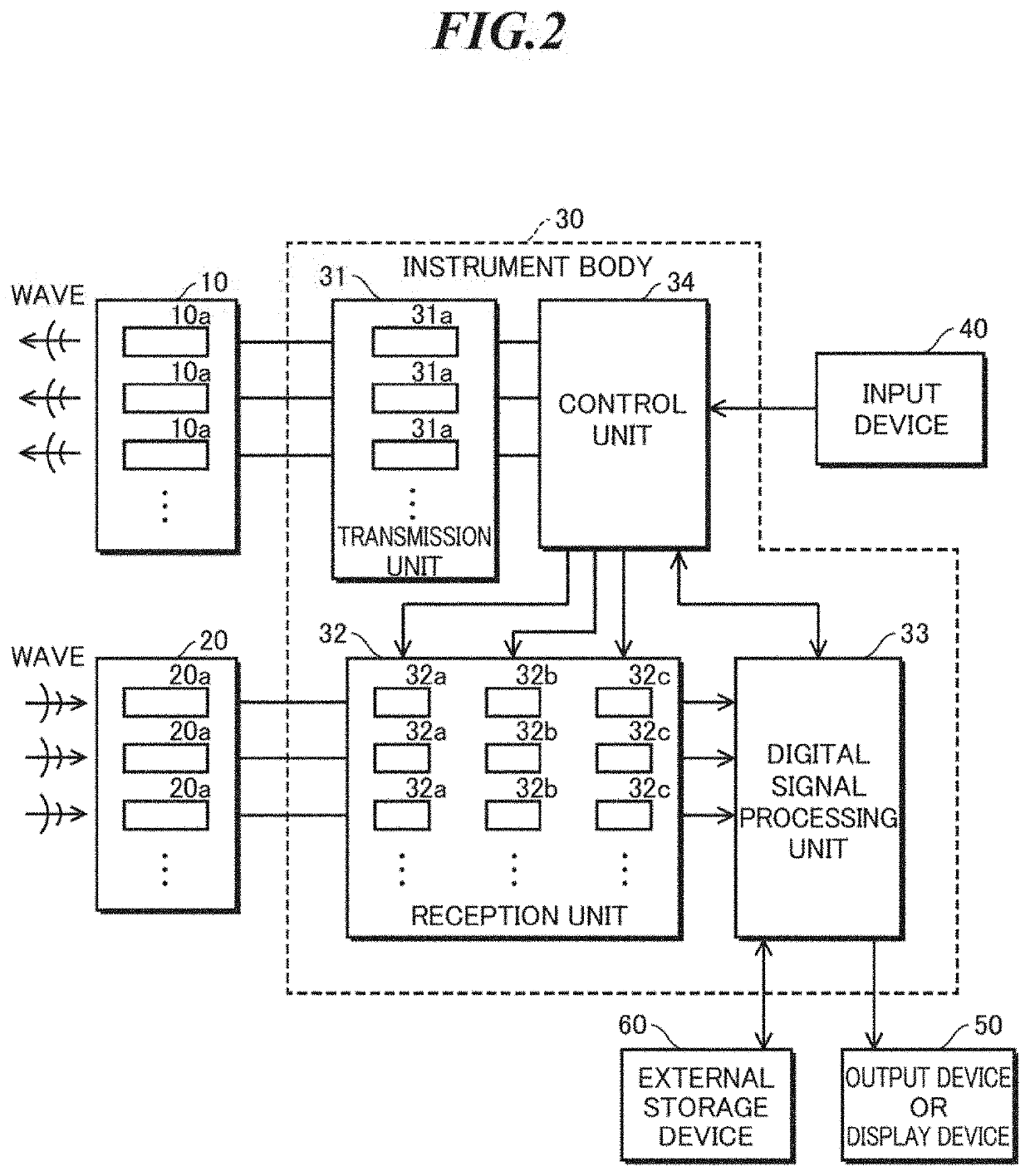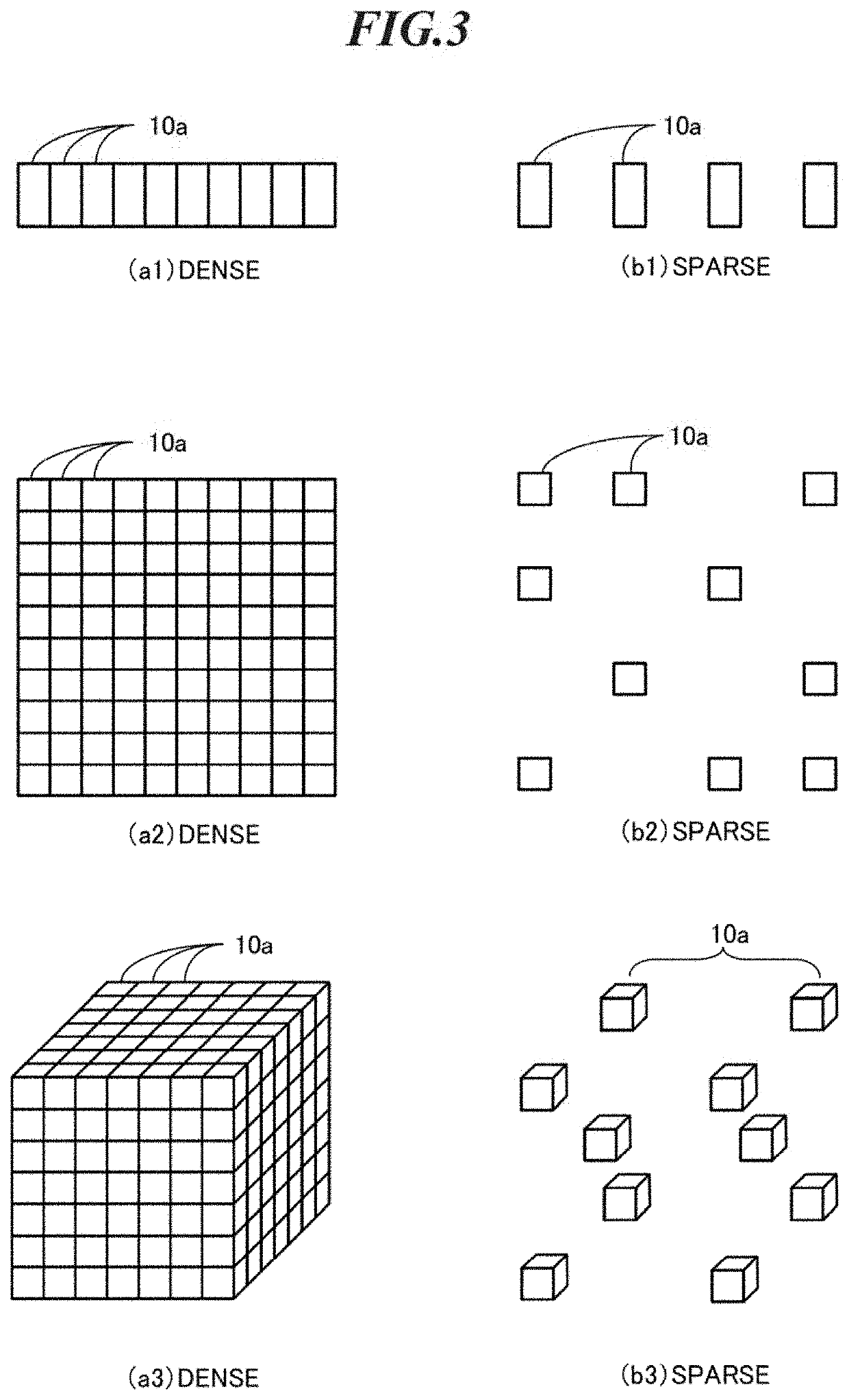Measurement and imaging instruments and beamforming method
a measurement and imaging technology, applied in the field of measurement and imaging methods, can solve the problems of insufficient sampling frequency of ad converters, insufficient measurement accuracy, and insufficient spatial resolution of signals, and achieve the effects of increasing measurement accuracy, reducing measurement accuracy, and increasing measurement accuracy
- Summary
- Abstract
- Description
- Claims
- Application Information
AI Technical Summary
Benefits of technology
Problems solved by technology
Method used
Image
Examples
1st embodiment
The 1st Embodiment
[0193]At first, the compositions of the measurement and imaging instrument according to the first embodiment of the present invention are explained. FIG. 1 shows a schematic representation (block map) of compositions of the measurement and imaging instrument according to the first embodiment of the present invention. As shown in FIG. 1, the measurement and imaging instrument is equipped with a transmission transducer (or an applicator) 10, a reception transducer (or a reception sensor) 20, an instrument body 30, an input device 40, an output device (or a display device) 50, and an external storage (memory) device 60. Here, the transmission transducer 10 and the reception transducer 20 can also be installed into one body or combined to realize a transmission and reception sensor.
[0194]FIG. 2 shows the specific schematic representation (block map) of compositions of a body of instrument shown in FIG. 1. Mainly, the body of instrument 30 is equipped with a transmissio...
« 2nd embodiment »
«2nd Embodiment»
[0801]Next, the compositions of the measurement and imaging instrument or the communication instrument according to the second embodiment of the present invention are explained. FIG. 1 shows a schematic representation (block map) of compositions for the active-type of instrument according to the first embodiment of the present invention; and FIG. 2 shows the specific schematic representation (block map) of compositions of a body of instrument shown in FIG. 1. In the second embodiment of the present invention, passive-type of instruments are used. Thus, at least the instruments according to the second embodiment are equipped with no transmission transducers and neither wire lines nor wireless lines for transferring drive signals from the control unit to the transmission transducers.
[0802]Regarding the active-type instrument according to the first embodiment, referring to FIGS. 1 and 2 showing a schematic representation (block map) of compositions of instrument, the co...
3rd embodiment
[0892]Being dependent on a frequency, a bandwidth, an intensity or a mode, etc., the waves such as electromagnetic waves, lights, mechanical vibrations, acoustic waves or thermal waves exhibit different behaviors. As far, many transducers for various type waves are developed and the waves themselves, the waves' transmission waves, reflection waves, refraction waves, diffraction waves or scattering waves are used for imaging. For instance, it is well known that on non-destructive examinations, medicines or sonars, ultrasounds, i.e., acoustic waves with higher frequencies, are used. Also on radars, electromagnetic waves with proper frequencies with respect to observation objects are used such as microwaves, terahertz waves, infrared rays, visible waves or radioactive rays such as an X-ray, etc. These are also for other waves.
[0893]On the imagings using such waves, amplitude data obtained via the quadrature detection, the envelope detection or the square detection are displayed in a gr...
PUM
 Login to View More
Login to View More Abstract
Description
Claims
Application Information
 Login to View More
Login to View More - R&D
- Intellectual Property
- Life Sciences
- Materials
- Tech Scout
- Unparalleled Data Quality
- Higher Quality Content
- 60% Fewer Hallucinations
Browse by: Latest US Patents, China's latest patents, Technical Efficacy Thesaurus, Application Domain, Technology Topic, Popular Technical Reports.
© 2025 PatSnap. All rights reserved.Legal|Privacy policy|Modern Slavery Act Transparency Statement|Sitemap|About US| Contact US: help@patsnap.com



